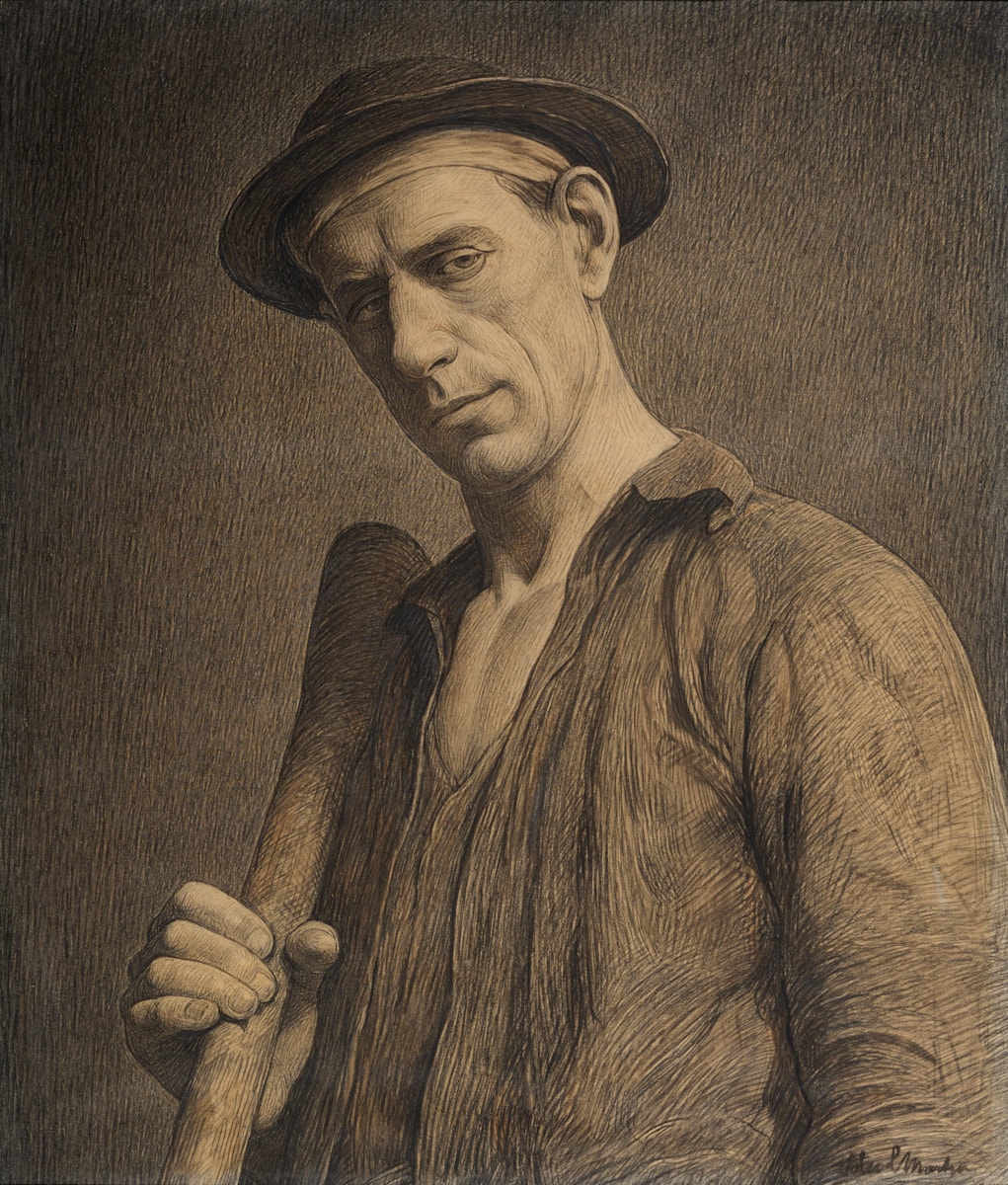
Alexandre-Louis Martin (Carnières 1887 - Couillet 1954)
The Miner
Description:
signed lower right: Alex L Martin
charcoal
850 x 710 mm
Provenance:
Private collection, Ostende
Note:
This arresting depiction of a miner is a characteristic example of the industrial portraiture of the Belgian painter Alexandre-Louis Martin. Large in scale, Martin’s portraiture is imbued with a striking realism garnered from the artist’s familiarity with his principal subjects: miners, factory workers and peasants. Martin was born in the Wallonian mining village of Carnières and grew up in the industrialising countryside which had proved so influential on the socially charged art of Constantin Meunier and Gustave Courbet, and on Emile Zola’s seminal mining novel Germinal. Like his predecessors, Martin sought to iconise the modern working man and illuminate his daily plight through stark portraiture, such as the triptych La Mine (1921), now at the Maison communale de Couillet, which included a portrait of the artist’s father. A similar triptych, now in a private collection, features the same type of “Vieux Wallon” which led the Parisian critic Thiébaut-Sisson to praise Martin as “La meilleure figure de tout le salon” in 1924, praising the “grandeur” of Martin’s figures. Unlike Meunier, Courbet and Zola however, Martin’s turbulent life and striking work is little-known, having only briefly visited the artistic capitals of Paris and Brussels and eschewed the Modernist revolutions of the early 20th century, garnering a more localised cult status in Wallonia. The largest collection of Martin’s works can today be seen in the eponymous Musée Alexandre-Louis Martin in Carnières.
Martin was born into relative poverty in May 1887, two years after the publication of Zola’s Germinal, and although Martin’s art was charged with the same working-class concerns, his portraiture also demonstrated the paucity of change since the fictional miner’s revolt of Zola’s novel. Martin’s father, Alexandre, was himself a miner at the mine of Saint-Eloi, and his mother, Aurélia, ran a labourer’s canteen. He was one of ten children, half of whom did not reach their 25th year, and one of whom was interned for infanticide. As a child, Martin’s precocious talent for drawing was first noticed when he drew portraits of his father’s fellow miners. This subject would prove to be his most successful and his most commonly revisited.
Please contact us for a full catalogue entry.
